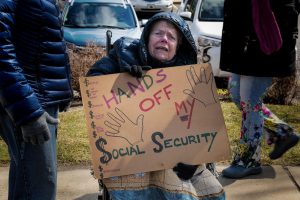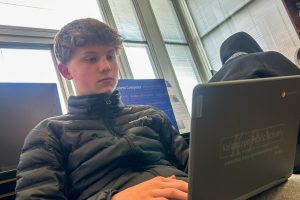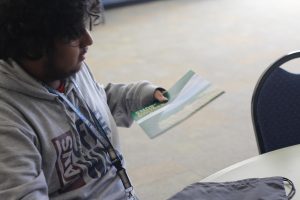“Through the Views” presentation gives student organizations a chance to speak on issues they care about
Credit: Hannah Locke
Senior Reign Semelbauer speaks for the Gender Sexuality Alliance on the gender spectrum as fellow club members prepare for the group poem.
June 7, 2022
On May 13, six of Loy Norrix’s student organizations came together for “Through the Views,” a presentation organized by librarian John Krieder. The event took place right after school and showcased speakers from the Gender and Sexuality Alliance, the Hispanic/Latinx Student Union, the Young Democrats, Green School Club, the Black Student Union, and the Women Empowerment Club. This was a chance for student leaders to speak out on issues relevant to their clubs and inform their peers.
Krieder said, “We saw a few examples of adults claiming to speak on behalf of our students, when our students did not necessarily feel heard or represented. So an awesome group of students wanted an opportunity to speak up for themselves about their experiences and their realities.”
The first group to speak was the Gender and Sexuality Alliance, advised by Krieder. Juniors Thea Pipe, Destiny Gutter and Jay Michels, and senior Reign Semelbauer began by briefly defining gender and the societal expectations surrounding it. They discussed how, though society focuses primarily on male vs. female, there are many different ways to identify and you don’t have to be one or the other: gender is a spectrum. After this brief speech, the group performed a poem about personal identity and their experiences as members of minority groups.
The next group to go was the Hispanic/Latinx Student Union. Club leaders, junior Andrea Medina-Hernandez and senior Gina Bello, gave an informative speech about the differences between being Latinx, Hispanic or both. They discussed their origins –both were born in
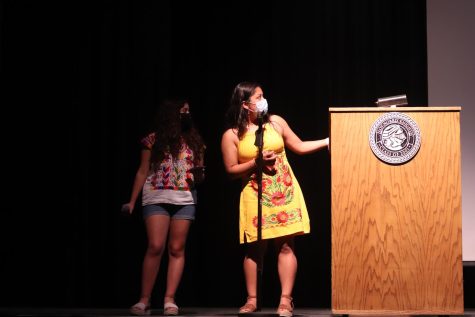
America to Mexican parents – and went on to inform the audience that this meant they were both Hispanic and Latinx.
According to their presentation, being Latinx “refers to anyone in Latin America, from Latin America, or descended from a Latin American country,” while being Hispanic “refers to someone that comes from or is descended from a country in Latin America whose official/national language is Spanish.”
Medina-Hernandez and Bello are both because they are descended from a Latin American country whose national language is Spanish. When discussing a country like Brazil, though, you would refer to it as Latinx only because their native language is Portuguese, not Spanish.
Young Democrats presented after the Hispanic/Latinx Student Union. Club leaders and juniors Guthrie Harris and Clara Moss spoke on performative activism. They discussed the merits of performative activism, like when it is done in an attempt to bring attention to an issue, and where it falls short, like when it is self-serving or fails to enact true change.
Harris and Moss went on to speak about examples of performative activism and their pros
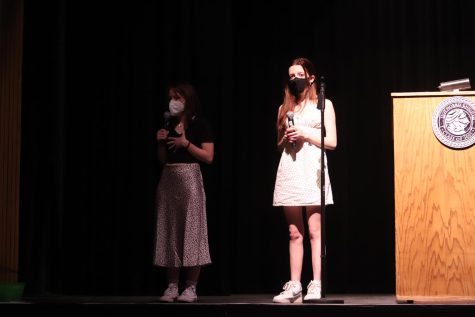
and cons, even acknowledging their own initiative, “Wear Orange Day.” This event encouraged students to wear orange in an attempt to bring awareness to gun violence after the Oxford High School shooting in Detroit, Michigan. They acknowledged that the message of this event got lost in translation for many students, who didn’t know what they were wearing orange for. There was also no legislative change that resulted from the initiative. Harris and Moss did, however, explain how they took the event further by inviting the City Commissioner ___ ____ to speak to the club the same day.
Contacting legislators is one way to take your performative activism further, they said, and gave other examples of doing so such as attending demonstrations, signing petitions, or donating if you have the resources to do so.
Green School Club was next: club leaders senior Sophia Talo and junior Reaghan Babrick spoke on the most recent efforts by the club to improve the environment around LN. Green School goes through the trash to find recycled bottles as well as collects recyclable bottles
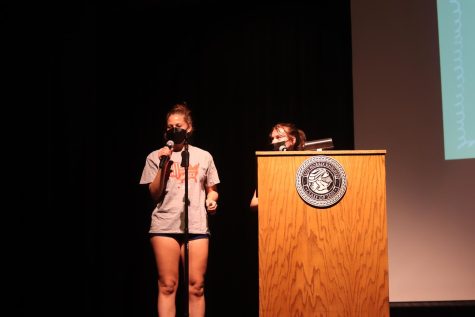
from classrooms. They have also conducted two trash pick-up initiatives over the past year, one in collaboration with Kalamazoo Central High School.
After Green School, the Black Student Union presented. First, club member and junior Javon Harris performed a poem about what being black is to him. After Harris’s performance, club founders and juniors Yacine Lo and Zakiya Fleming gave their presentation titled “Black Fatigue.” Black fatigue is the mental and physical effects of discrimination, racism, and microaggressions on black people. Fleming and Lo introduced the audience to this minimally discussed topic through examples, both in media and at Norrix.
Simone Biles’ withdrawal from the 2020 Tokyo Olympics was an example given. Biles is the best gymnast of our generation, and the expectations placed on her are extreme because of this. These expectations, however, come with discrimination and microaggressions which lead to mental exhaustion for Biles. This exhaustion led to her withdrawal from the Tokyo Olympics which brought both attention to the issue of black fatigue and the mental health of black people, but also caused her to face heavy criticism.
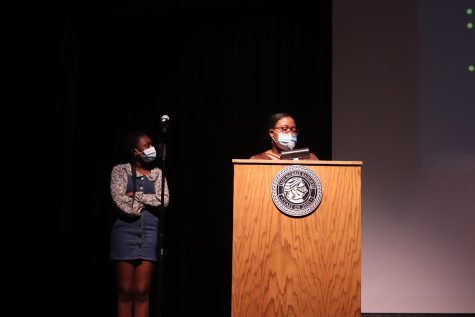
In Norrix, they explained, black fatigue can affect student-athletes heavily because of the stereotypes placed on black athletes on top of the pressures of performing in school. Additionally, fighting is a way that black fatigue manifests. Students are judged and criminalized for fighting, when in reality, acting out is a symptom of a lack of quality mental health resources for black students.
To finish off their presentation club member and freshman Janeya Williams performed a rap.
Finally, the Women Empowerment Club founders and juniors Reniya Fance and Fleming gave their presentation on the criminalization of black girls through the education system. Fance began the presentation with a short piece about how she has experienced being a black girl in Norrix. The isolation she feels in her advanced classes as well as the exhaustion and annoyance she feels towards her educators for their behavior and microaggressions towards her.
After Fance spoke, they showed a short documentary titled PUSHOUT by the California Endowment. The documentary discussed the phenomenon of black girls being pushed out of the education system and into the criminal justice system at a startling rate.
Fleming and Fance went on to explain how this trend looks at Norrix. They brought up suspension rates, which are far higher for black girls then girls of other races, especially those who are white. They explained the fact that black girls are far more likely to be dress-coded because of the over sexualization of black women by the media and society.
Next, fight culture at Norrix came up and Fance and Fleming explained how when black students, most notably black girls, get into fights at school it is immediately deemed “ghetto” by their peers and even administrators, without further investigation into the true reasons
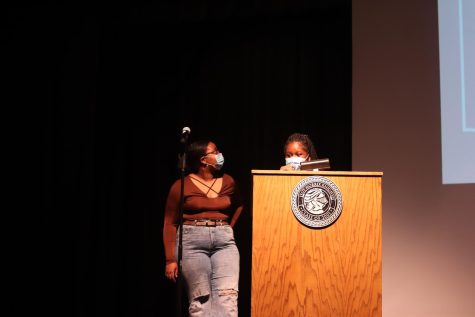
that black girls may act out in schools: mental health issues, poor home environments, poor treatment at school, etc.
At the end of their presentation, Fance and Fleming provided ways for allies to amend the criminalization of black girls in our communities: by acknowledging the phenomonen, believing your black friends when they bring up instances of racism and discrimination to you, checking white peers and teachers when they do or say something out of line, and making efforts to break your own biases and stigmas.
Overall, the event allowed for a diverse range of clubs at Norrix to speak on topics important and relevant to them.
“I hope the event offered a platform for our students, many of whom belong to historically underrepresented groups. In fact, all of the speakers belong to at least one historically underrepresented group: youth,” Krieder gushed about the success of the presentation. “We do not do a great job of listening to our young people, our students, who are more than capable of leading the way for us!”






